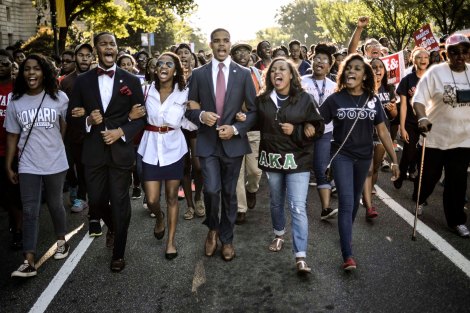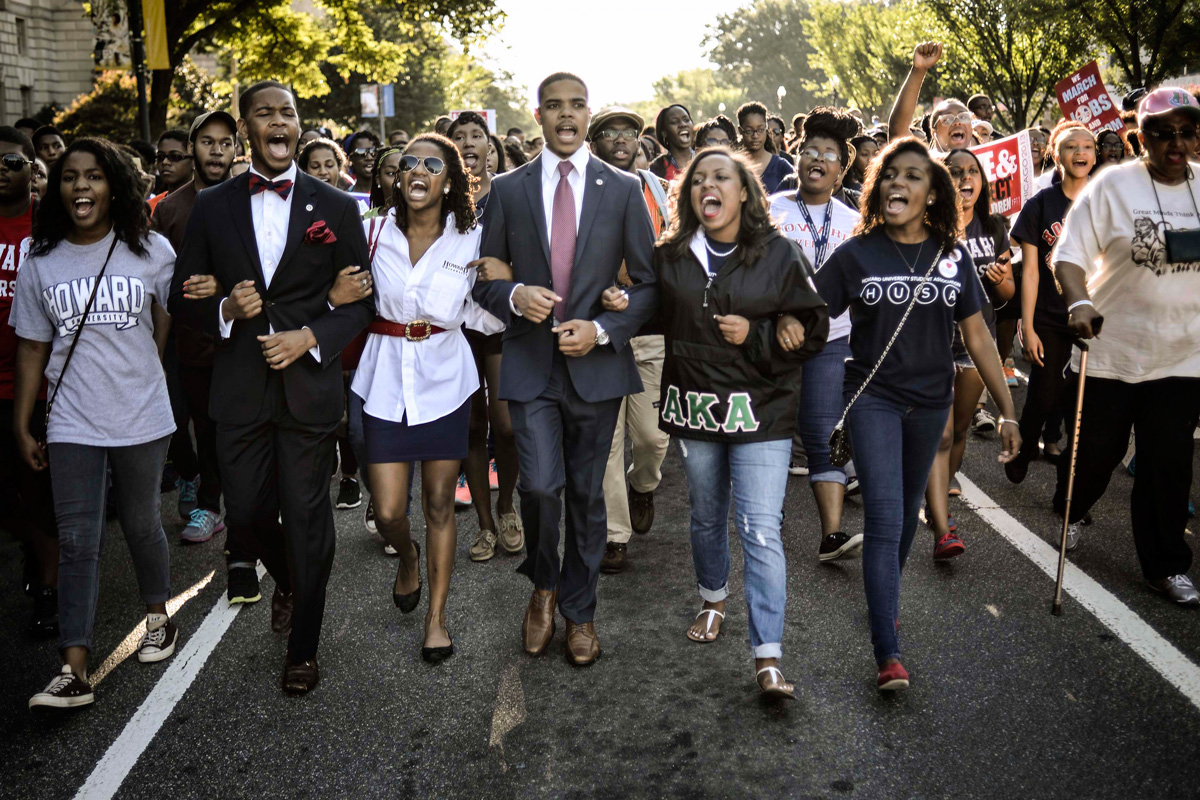
REUTERS/James Lawler Duggan
Somehow environmental justice got lost at the rally commemorating the 50th anniversary of the March on Washington for Freedom & Jobs. The 50-plus speakers at the Aug. 24 gathering, which drew tens of thousands of people to the nation’s capital, spoke out about restoring voting rights, fighting “stand your ground” laws, and pushing for stronger worker wages. But little was said about how people of color suffer disproportionately from polluted air and water, and are the first to suffer because of climate change.
That was unfortunate. Whether the organizers of last weekend’s rally knew it or not, the 1963 March on Washington inspired some of the pioneering activists who created the modern-day environmental movement. Some of those environmentalists participated in the civil rights movement that birthed the 1963 March. Since that time, however, the environmental and civil rights movements have never fully gelled together, despite some efforts to make that happen along the way.
There were signs that the organizers of last weekend’s rally were again trying to connect the dots. The National Action Network, the civil rights organization that led the 50th anniversary rally, listed environmental justice as one of the issues motivating the march:
In Los Angeles, African Americans are twice as likely to die in a heat wave. 68% of African Americans live within 30 miles of a coal plant and this creates more incidences of asthma. Latino children are twice as likely to die from an asthma attack as non-Latino children.
Rev. Lennox Yearwood of the Hip Hop Caucus made climate change and the proposed Keystone XL tar-sands pipeline cornerstones of his short speech, and U.S. Senate-hopeful Cory Booker touched on the environment. The Sierra Club and Greenpeace supported the march, both individually and through the Democracy Initiative, a coalition of progressive policy groups that also includes the NAACP.
But those two speakers were but a tiny sub-set of a sub-set of speakers, and the green posters of the Sierra Club were but small ponds among the ocean of attendees. Organizers largely missed an opportunity to recognize the longstanding connection between civil rights and environmental protection, and to forge a stronger alliance moving forward.
To be fair, environmental protection wasn’t a registered demand at the 1963 march. Those organizers were justifiably more concerned with the frothing, attack-trained fangs of Jim Crow. But the 1963 march is in many ways responsible for at least midwifing the event that brought the modern-day environmental movement into existence: the national Earth Day “teach-in” of 1970.
The concept for the April 22 Earth Day rally came from Wisconsin Sen. Gaylord Nelson. But the committee that brought it into fruition was made up of seven people, most of them students, and most either civil rights organizers or people with strong ties to the civil rights movement.
One of them, Arturo Sandoval, was a Chicano activist from New Mexico who was completely clear about racial justice in the new environmental organizing. As a student at the University of New Mexico, he worked to establish a Mexican-American students union and a Chicano Studies program, and fought discrimination against minority workers at the college. He led the Earth Day rally in the barrios of his home city of Albuquerque, where sewage plants and pollution-heavy factories besieged poor communities.
In his Earth Day speech, Sandoval schooled the crowd on the concept of “la raza,” or “the race,” which he said didn’t just apply to Chicano Americans. “We command ‘la raza’ to live, because humanity is dying,” he said. “And America — white America — has lost its ability to cry, and laugh and sing and love and live.”
Steve Cotton, the national Earth Day committee’s press outreach person, had left Harvard to work for the Southern Courier, a civil rights newspaper in Alabama started by Freedom Summer activists. Sam Love, the group’s Southern coordinator, was a Mississippi State University student who helped register black voters in the state where three white Freedom Summer students were murdered. In 1968, Love joined Fannie Lou Hamer and civil rights leaders at the Democratic National Convention, where they challenged Mississippi’s sitting delegation. The national Earth Day coordinator, Denis Hayes, was an ecologist who wanted to marry science with social justice activism.
In the lead-up to the first Earth Day, some African Americans criticized the effort, saying that a day of environmental protests would distract people from the civil rights injustices that were still occurring. But Hayes addressed those concerns upfront. In a press conference, Hayes said that organizers’ “goal is not to clean the air while leaving slums and ghettos, nor is it to provide a healthy world for racial oppression and war.”
At an Earth Day event in Washington, D.C., black civil rights activist Channing Phillips said he was participating “out of a deep conviction that racial injustice, war, urban blight, and environmental rape have a common denominator in our exploitive economic system.”
Of course, the 1963 March on Washington led the way to the passage of the Civil Rights Act, and later the Voting Rights Act and Fair Housing Act, and helped elevate the U.S. Department of Housing and Urban Development into a Cabinet-level agency. The 1970 Earth Day helped win to passage of the Clean Water Act, a new Clean Air Act, the Endangered Species Act, and the formation of the Environmental Protection Agency.
Given what each of these movements produced independently, it’s scary to think about what they might produce in unison.
This week, I spoke with Quentin James, national director of the Sierra Club Student Coalition, who has also worked with the NAACP. During the week-long March on Washington 50th anniversary events, he co-convened a climate justice workshop, training young people to launch campaigns in their own communities that address climate change and the right to vote. Previous to this, he brought 10,000 students to a rally at the White House to urge President Obama to address climate change and stop construction of the Keystone XL pipeline. He also helped organize a college student-led campaign that successfully pushed 20 universities across the nation to switch from coal plant-powered energy to renewable energy sources. He has effectively married the best of both March on Washington and Earth Day worlds and achieved results.
James told me he was not bothered by the lack of environment mentions from the speakers at the Aug. 24 rally. While the connections between civil rights and the environment weren’t made at the podium, he said they are being made in communities, where it counts.
“Sure, we could have had 10 speakers on climate and environmental justice issues” on stage on Saturday, James said. “But it’s not about words and speeches, it’s about the actions. We do need a groundswell of communities to uplift our work, but I know that that work is already happening, so I don’t need someone to speak about it on stage to know that it’s real.”
Still, the two movements couldn’t need each other more than they do right now. As Rev. Yearwood said, standing before the Lincoln Memorial at the 50th anniversary rally, with “#NOKXL” stitched in his baseball cap, “The issue of the 20th century was equality, but the issue of the 21st century is existence.”
Or, as he told me when I caught him shortly after his speech, “Climate change may not have been a problem in 1963, but it certainly will be a problem in 2063.”



